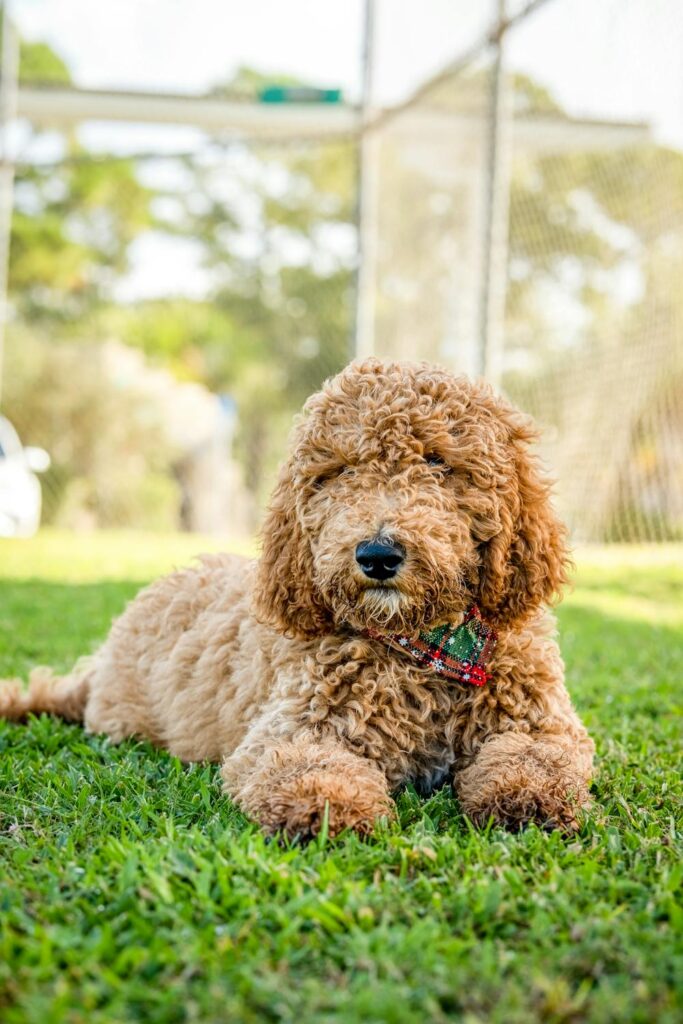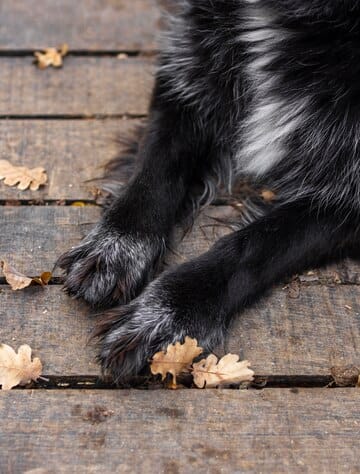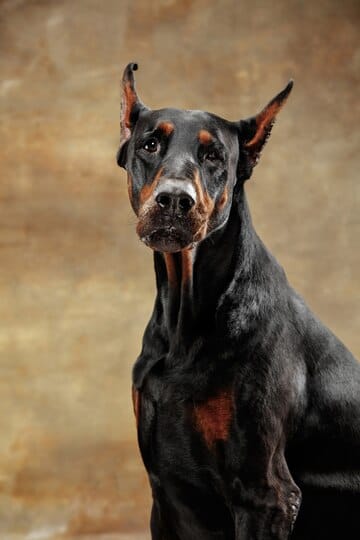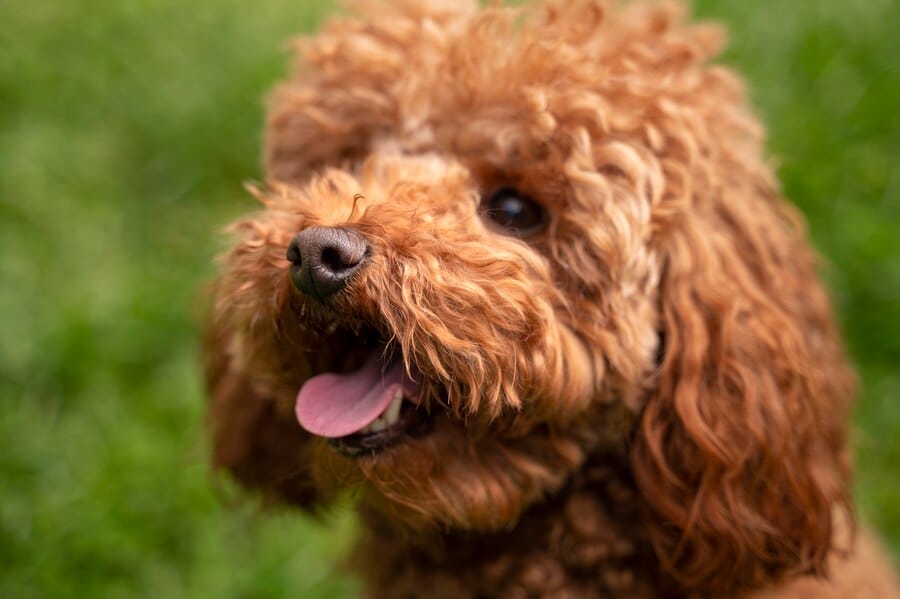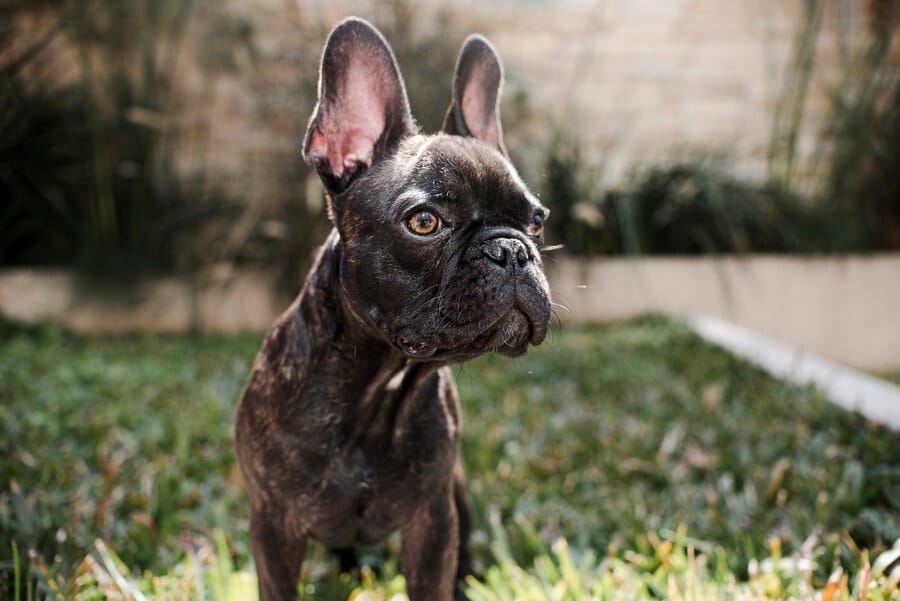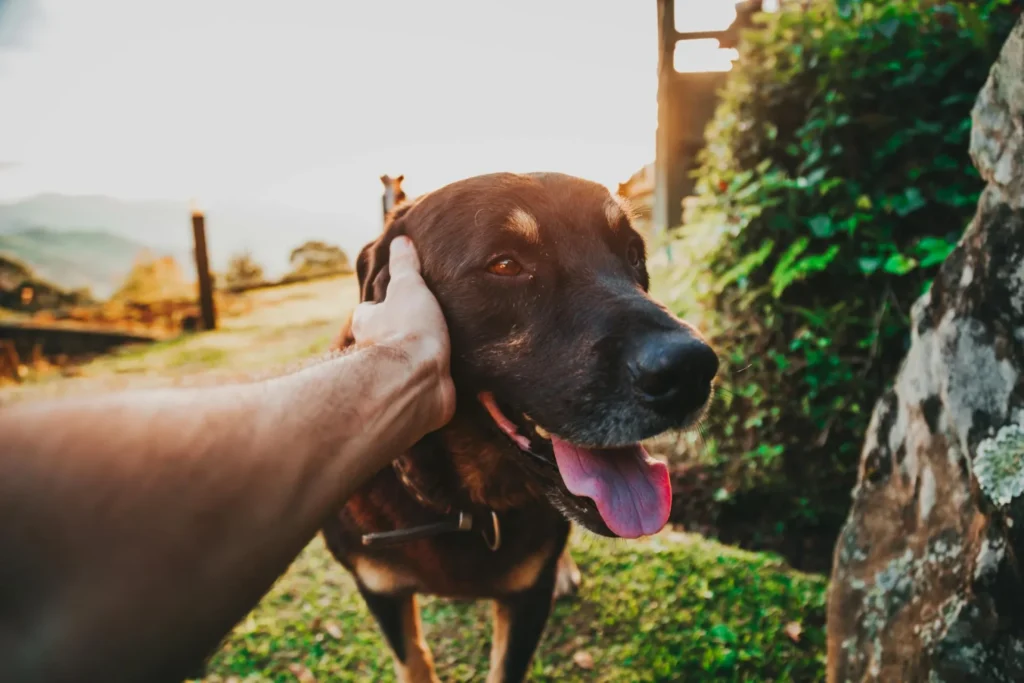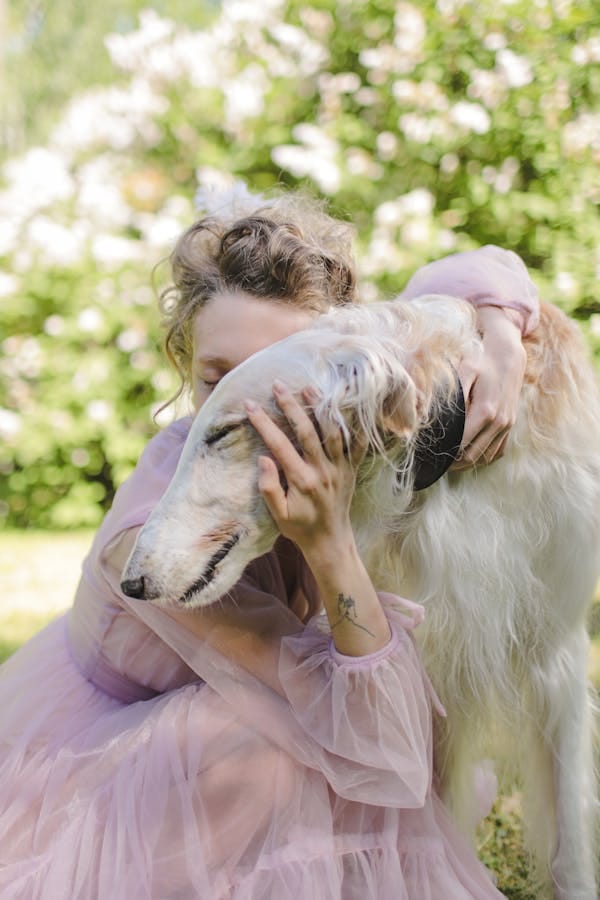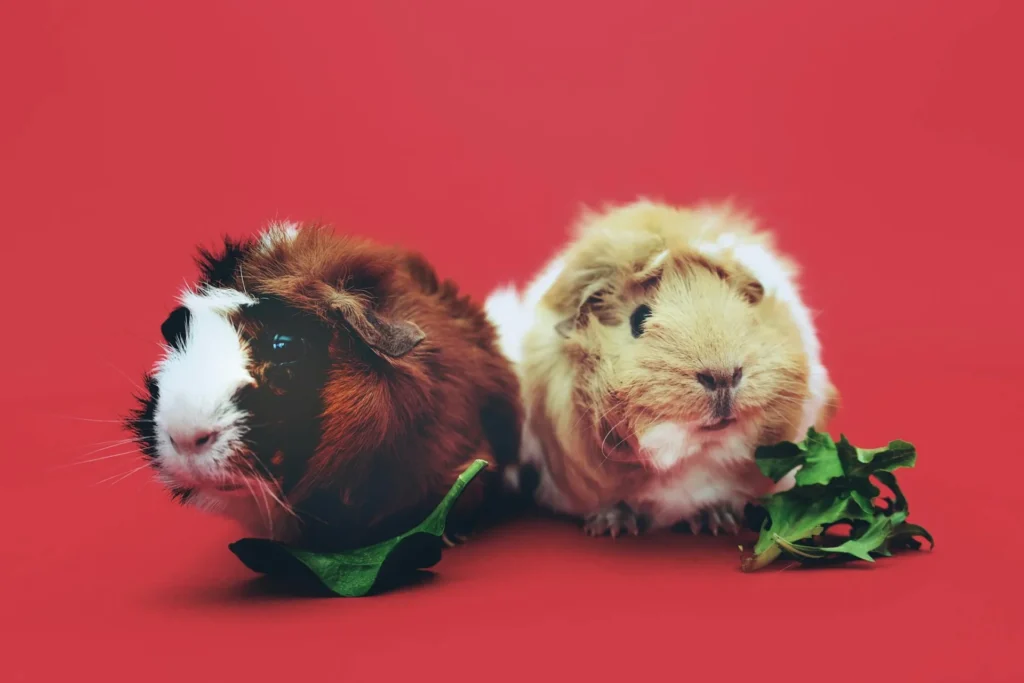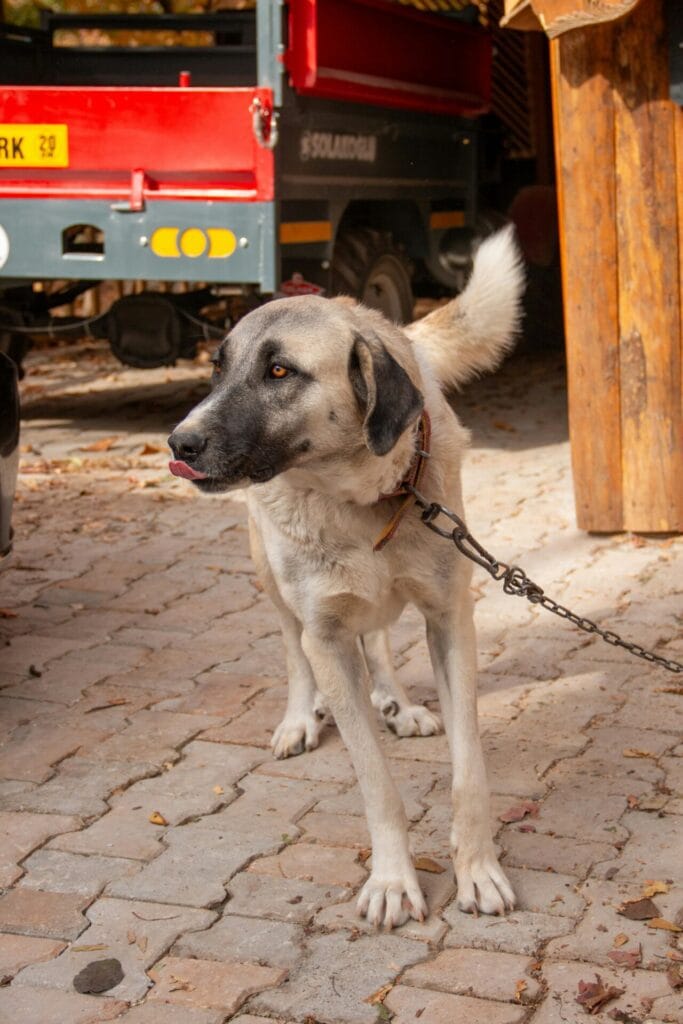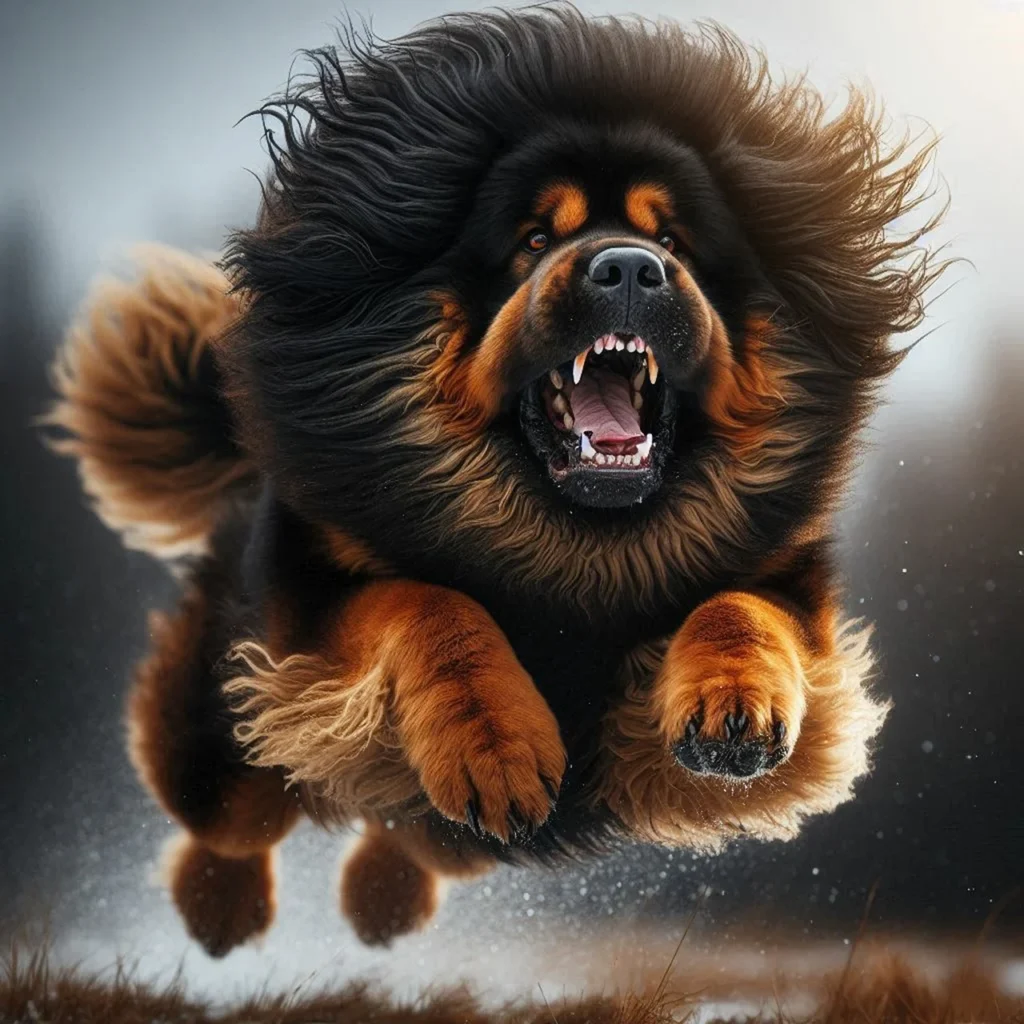- The Canine Senses: An Overview
- Poodle’s Sense of Smell: A Nose for Excellence
- Poodle Vision: Seeing the World Through Their Eyes
- The Sound of Poodles: Auditory Acuity
- A Touch of Poodle: Tactile Sensations
- Poodle Palate: Tasting Their Way Through Life
- Sensory Development in Poodles
- Caring for Your Poodle’s Senses
- When to Consult a Veterinarian
- Enhancing Your Poodle’s Sensory Experiences
- Comparing Poodle Senses Across Varieties
- The Role of Genetics in Poodle Senses
- Environmental Factors Affecting Poodle Senses
- Training and Poodle Senses
- Poodle Senses in Working Roles
- The Future of Understanding Canine Senses
- Conclusion: Embracing Your Poodle’s Sensory World
Poodles, known for their intelligence and elegance, are more than just a pretty face. These remarkable canines possess a complex sensory system that allows them to navigate and interact with the world in fascinating ways. In this comprehensive guide, we’ll dive deep into the five senses of poodles – smell, sight, hearing, touch, and taste – exploring how each sense functions, comparing abilities across poodle varieties and ages, and providing insights on how to nurture and care for your poodle’s sensory health.
The Canine Senses: An Overview
Before we delve into the specifics of poodle senses, let’s briefly overview how canine senses compare to human senses:
| Sense | Canine (Poodle) | Human | Comparison | Notable Poodle Traits |
|---|---|---|---|---|
| Smell 👃 | ~220 million olfactory receptors | ~5 million olfactory receptors | Dogs: 10,000-100,000 times better | Poodles excel in scent work and tracking |
| Sight 👁️ | Dichromatic vision (blue and yellow) | Trichromatic vision (red, blue, green) | Humans: Better color vision and detail | Poodles have excellent motion detection |
| 250° field of view | 180° field of view | Dogs: Wider field of view | Poodles’ eye position gives good peripheral vision | |
| 20/75 visual acuity | 20/20 visual acuity | Humans: Sharper detail vision | Poodles compensate with other senses | |
| Hearing 👂 | Frequency range: 67-45,000 Hz | Frequency range: 20-20,000 Hz | Dogs: Can hear higher frequencies | Poodles’ ear shape enhances sound collection |
| Can locate sound source in 0.06 seconds | Can locate sound source in 0.09 seconds | Dogs: Faster sound localization | Poodles excel in directional hearing | |
| Touch 🖐️ | Sensitive whiskers and paw pads | Sensitive fingertips | Similar, but dogs have additional sensors | Poodles’ curly coat provides extra tactile input |
| Taste 👅 | ~1,700 taste buds | ~9,000 taste buds | Humans: More varied taste perception | Poodles have a strong preference for meat flavors |
| Can detect water-soluble chemicals | Can detect fat-soluble chemicals | Dogs: Better at detecting meat-based tastes | Poodles can be trained to distinguish subtle taste differences |
Now, let’s explore each sense in detail, with a focus on poodles.
Poodle’s Sense of Smell: A Nose for Excellence
Do Poodles Have a Good Sense of Smell?
The short answer is a resounding yes! 🐕👃 Poodles, like all dogs, have an incredibly powerful sense of smell. Here’s why:
- Olfactory receptors: Poodles have about 220 million olfactory receptors in their noses, compared to a human’s mere 5 million.
- Brain allocation: The part of a poodle’s brain devoted to analyzing smells is 40 times greater than that of a human.
- Nasal structure: Poodles have a complex nasal structure that allows them to continuously take in new odors while exhaling.
Poodle Varieties and Scent Abilities
While all poodles have excellent noses, there are some slight differences between varieties:
| Poodle Variety | Scent Ability | Notable Characteristics |
|---|---|---|
| Standard Poodle | Excellent | Often used in scent work and hunting |
| Miniature Poodle | Very Good | Compact size can be an advantage in certain scent tasks |
| Toy Poodle | Good | Smaller nasal passages may slightly reduce scent perception |
Improving Your Poodle’s Sense of Smell
While poodles naturally have an excellent sense of smell, you can help keep their olfactory abilities sharp:
- Scent games: Hide treats or toys for your poodle to find.
- Nosework training: Engage in formal nosework activities.
- Varied environments: Expose your poodle to different smells on walks.
- Healthy diet: Proper nutrition supports overall sensory health.
Identifying Smell-Related Problems
Watch for these signs that may indicate issues with your poodle’s sense of smell:
- Lack of interest in food or treats
- Difficulty finding dropped food
- Bumping into objects more frequently
- Decreased interest in scent-based activities
If you notice these symptoms, consult your veterinarian.
Poodle Vision: Seeing the World Through Their Eyes
Do Poodles Have Good Eyesight?
Poodles have good eyesight, but it differs from human vision in several ways:
- Color vision: Poodles are dichromatic, meaning they see primarily yellows and blues.
- Motion detection: Poodles excel at detecting even slight movements.
- Night vision: Thanks to a reflective layer called the tapetum lucidum, poodles see better in low light than humans.
- Visual acuity: While not as sharp as human vision, poodle eyesight is sufficient for their needs.
Poodle Varieties and Vision
Vision capabilities are generally consistent across poodle varieties, but there are some considerations:
| Poodle Variety | Vision Characteristics | Notes |
|---|---|---|
| Standard Poodle | Excellent peripheral vision | Higher vantage point |
| Miniature Poodle | Good all-around vision | Eye level similar to many potential threats |
| Toy Poodle | Good close-up vision | Lower vantage point may limit distance vision |
Improving Your Poodle’s Eyesight
While you can’t dramatically improve your poodle’s natural vision, you can support healthy eyesight:
- Regular check-ups: Schedule annual eye exams with your vet.
- Proper nutrition: Ensure their diet includes eye-healthy nutrients like omega-3 fatty acids.
- Eye protection: Use doggles in harsh conditions like bright sun or swimming.
- Mental stimulation: Provide toys and games that engage visual skills.
Identifying Vision Problems
Be alert for these signs of potential vision issues:
- Bumping into objects
- Reluctance to move in dimly lit areas
- Cloudy or red eyes
- Excessive tearing or eye discharge
Early detection of eye problems is crucial, so consult your vet if you notice these symptoms.
The Sound of Poodles: Auditory Acuity
Do Poodles Have Good Hearing?
Poodles, like most dogs, have excellent hearing capabilities:
- Frequency range: Poodles can hear frequencies up to 65,000 Hz, while humans top out at about 20,000 Hz.
- Directional hearing: Their movable ears help poodles pinpoint sound sources accurately.
- Distance: Poodles can hear sounds from four times the distance humans can.
- Sound discrimination: They can distinguish between similar sounds with remarkable precision.
Poodle Varieties and Hearing
Hearing abilities are generally consistent across poodle varieties, but there are some nuances:
| Poodle Variety | Hearing Characteristics | Notes |
|---|---|---|
| Standard Poodle | Excellent overall hearing | Larger ear canals may enhance low-frequency perception |
| Miniature Poodle | Very good hearing | Balanced auditory capabilities |
| Toy Poodle | Acute hearing, especially high frequencies | Smaller ear canals may slightly amplify high pitches |
Improving Your Poodle’s Hearing
While poodles naturally have excellent hearing, you can help maintain their auditory health:
- Regular cleaning: Gently clean your poodle’s ears to prevent wax buildup.
- Noise protection: Limit exposure to very loud noises.
- Auditory enrichment: Provide toys that make different sounds.
- Training with various sounds: Use different verbal cues and sounds in training.
Identifying Hearing Problems
Watch for these signs that may indicate hearing issues:
- Unresponsiveness to verbal cues or sounds
- Excessive barking or howling
- Tilting or shaking of the head
- Irritability or depression
If you notice these symptoms, consult your veterinarian for a thorough examination.
A Touch of Poodle: Tactile Sensations
Do Poodles Have a Good Sense of Touch?
Poodles have a highly developed sense of touch, which they use in various ways:
- Paw pads: Sensitive nerve endings in their paw pads help poodles navigate different surfaces.
- Whiskers: These specialized hairs act as tactile sensors, providing information about the environment.
- Coat: Poodles’ curly coats can detect subtle changes in air movement and temperature.
- Mouth: The mouth and tongue are highly sensitive, used for exploring objects.
Poodle Varieties and Touch Sensitivity
Touch sensitivity is generally consistent across poodle varieties, but there are some differences:
| Poodle Variety | Touch Characteristics | Notes |
|---|---|---|
| Standard Poodle | Excellent overall sensitivity | Larger paw pads may provide more detailed feedback |
| Miniature Poodle | Very good tactile sense | Well-balanced sensitivity across body |
| Toy Poodle | Highly sensitive, especially in paws | Smaller size may increase relative sensitivity |
Improving Your Poodle’s Sense of Touch
While touch is innate, you can provide experiences to enrich your poodle’s tactile world:
- Variety of textures: Expose your poodle to different surfaces and materials.
- Gentle grooming: Regular brushing stimulates nerve endings in the skin.
- Massage: Gentle massage can enhance body awareness and circulation.
- Tactile toys: Provide toys with various textures for exploration.
Identifying Touch-Related Problems
Be aware of these signs that may indicate issues with your poodle’s sense of touch:
- Oversensitivity or undersensitivity to touch
- Excessive licking or chewing of paws or skin
- Reluctance to walk on certain surfaces
- Signs of pain when touched in specific areas
If you notice these symptoms, consult your veterinarian for an evaluation.
Poodle Palate: Tasting Their Way Through Life
Do Poodles Have Good Taste Buds?
While not as refined as their sense of smell, poodles do have a functional sense of taste:
- Taste bud count: Poodles have about 1,700 taste buds, compared to humans’ 9,000.
- Taste categories: They can distinguish between sweet, sour, salty, and bitter tastes.
- Umami sensitivity: Poodles are particularly responsive to umami, the savory taste.
- Smell-taste connection: Much of what we perceive as taste is actually smell, and poodles excel in this area.
Poodle Varieties and Taste Preferences
Taste preferences can vary among individual poodles, but there are some general trends:
| Poodle Variety | Taste Characteristics | Notes |
|---|---|---|
| Standard Poodle | Varied palate | Often used in hunting, may have a taste for game |
| Miniature Poodle | Generally adventurous eaters | May be more likely to try new foods |
| Toy Poodle | Can be more particular | Smaller mouths may influence texture preferences |
Improving Your Poodle’s Sense of Taste
While you can’t dramatically alter your poodle’s taste buds, you can enrich their eating experience:
- Varied diet: Offer a range of healthy foods to stimulate different taste receptors.
- Food puzzles: Use puzzle feeders to engage multiple senses during mealtime.
- Avoid table scraps: Human food can dull a dog’s appreciation for their regular diet.
- Fresh water: Always provide clean, fresh water to keep taste buds clean and hydrated.
Identifying Taste-Related Problems
Watch for these signs that may indicate issues with your poodle’s sense of taste:
- Sudden loss of appetite
- Excessive drooling
- Difficulty eating or swallowing
- Preference for only very strong-smelling foods
If you notice these symptoms, consult your veterinarian for a check-up.
Sensory Development in Poodles
Understanding how a poodle’s senses develop from puppyhood to adulthood can help you provide appropriate care and stimulation at each life stage.
Puppy Stage (0-1 year)
| Sense | Development | Notes |
|---|---|---|
| Smell 👃 | Functional at birth, rapidly improving | Critical for bonding and finding milk |
| Sight 👁️ | Eyes open around 2 weeks, full vision by 8 weeks | Color vision develops around 8 weeks |
| Hearing 👂 | Ear canals open around 2 weeks | Sensitive to loud noises |
| Touch 🖐️ | Highly developed from birth | Important for temperature regulation and bonding |
| Taste 👅 | Functional at birth | Preferences develop over time |
Adolescent to Adult Stage (1-7 years)
| Sense | Characteristics | Notes |
|---|---|---|
| Smell 👃 | Fully developed, extremely acute | Prime time for scent work training |
| Sight 👁️ | Sharpest during this period | Regular eye check-ups important |
| Hearing 👂 | Excellent, able to discern subtle sounds | Be mindful of noise exposure |
| Touch 🖐️ | Refined sensitivity | Regular grooming helps maintain skin health |
| Taste 👅 | Well-established preferences | Good time to introduce variety in diet |
Senior Stage (8+ years)
| Sense | Changes | Care Considerations |
|---|---|---|
| Smell 👃 | May gradually decline | Engage in gentle scent games to maintain ability |
| Sight 👁️ | May develop age-related issues | More frequent eye check-ups recommended |
| Hearing 👂 | May experience some hearing loss | Use visual cues alongside verbal commands |
| Touch 🖐️ | May become more sensitive | Gentle grooming and massages can be beneficial |
| Taste 👅 | May become less discerning | Ensure food is appetizing and easy to eat |
Caring for Your Poodle’s Senses
Maintaining your poodle’s sensory health is crucial for their overall well-being. Here are some general tips:
- Regular vet check-ups: Schedule annual examinations to catch any sensory issues early.
- Proper nutrition: A balanced diet supports all sensory functions.
- Mental stimulation: Engage your poodle in activities that use all their senses.
- Physical exercise: Regular exercise promotes overall health, including sensory function.
- Grooming: Regular grooming helps maintain skin and coat health, supporting touch sensitivity.
- Dental care: Good oral hygiene supports both taste and smell.
- Environmental enrichment: Provide a variety of toys, textures, and safe smells in your poodle’s environment.
When to Consult a Veterinarian
While some changes in sensory function are normal with age, certain symptoms warrant immediate veterinary attention:
- Sudden changes in behavior or responsiveness
- Signs of pain or discomfort
- Noticeable discharge from eyes, ears, or nose
- Sudden loss of appetite or thirst
- Difficulty navigating familiar environments
- Excessive scratching or licking of sensory organs (eyes, ears, nose, paws)
Early intervention can often prevent minor issues from becoming major problems.
Enhancing Your Poodle’s Sensory Experiences
Enriching your poodle’s sensory world can lead to a happier, more fulfilled pet. Here are some ideas:
- Scent trails: Create trails with treats or toys for your poodle to follow.
- Texture walks: Take walks on various surfaces – grass, sand, pebbles – to stimulate paw sensitivity.
- Sound games: Use different sounds as cues for treats or play.
- Visual stimulation: Introduce new toys with different colors and patterns.
- Taste exploration: Offer safe, dog-friendly fruits and vegetables as occasional treats.
- Sensory puzzles: Use puzzle toys that engage multiple senses simultaneously.
- Agility training: This activity engages all senses and provides excellent physical exercise.
- Canine massage: Learn basic massage techniques to stimulate your poodle’s sense of touch.
- Water play: If your poodle enjoys it, swimming engages multiple senses in a novel way.
- Nature walks: Exploring new environments provides a wealth of sensory information.
Comparing Poodle Senses Across Varieties
While all poodles have excellent sensory capabilities, there are some subtle differences between varieties. Let’s compare:
| Sense | Standard Poodle | Miniature Poodle | Toy Poodle |
|---|---|---|---|
| Smell 👃 | Excellent, often used in scent work | Very good, compact size can be advantageous | Good, may have slightly less air flow through smaller nasal passages |
| Sight 👁️ | Good distance vision, excellent motion detection | Balanced vision, good for their size | Excellent close-up vision, may have limited distance perception |
| Hearing 👂 | Excellent, especially low to mid-range frequencies | Very good overall hearing | Acute, particularly sensitive to high frequencies |
| Touch 🖐️ | Highly sensitive, especially in paws and whiskers | Well-balanced sensitivity | Extremely sensitive, especially in smaller paws |
| Taste 👅 | Generally adventurous eaters | Often eager to try new flavors | Can be more particular about textures and flavors |
The Role of Genetics in Poodle Senses
Genetics play a significant role in a poodle’s sensory capabilities. Responsible breeding practices aim to maintain or improve these sensory traits:
- Eye health: Breeding away from genetic conditions like progressive retinal atrophy (PRA).
- Ear structure: Maintaining the characteristic poodle ear shape, which supports their excellent hearing.
- Nose structure: Preserving the long poodle snout, which houses their powerful olfactory system.
- Coat quality: Maintaining the poodle’s distinctive coat, which plays a role in their tactile sensitivity.
- Overall health: Breeding for general health and longevity, which supports sensory function throughout life.
Environmental Factors Affecting Poodle Senses
A poodle’s environment can significantly impact their sensory development and maintenance:
- Urban vs. Rural: Urban poodles may have more diverse auditory and olfactory experiences, while rural poodles might have more space for visual and kinetic exploration.
- Climate: Extreme temperatures can affect a poodle’s comfort and willingness to use their senses fully.
- Household composition: The presence of other pets or children can provide rich sensory experiences.
- Pollution: Air and noise pollution can potentially impact a poodle’s sensory acuity over time.
- Living space: The size and layout of a poodle’s living space can influence their opportunities for sensory exploration.
Training and Poodle Senses
Poodles’ keen senses make them excellent candidates for various types of training:
- Scent work: Utilizing their powerful noses for tracking, search and rescue, or even medical detection.
- Agility: Engaging their visual, auditory, and tactile senses in a fast-paced, physically demanding activity.
- Obedience: Leveraging their ability to discern subtle visual and auditory cues.
- Therapy work: Using their sensory awareness to provide comfort and support to humans.
- Water retrieval: Engaging multiple senses in an activity that harkens back to their hunting dog heritage.
Poodle Senses in Working Roles
Poodles’ sensory capabilities make them suitable for various working roles:
- Service dogs: Their intelligence and sensory acuity make them excellent helpers for people with disabilities.
- Therapy dogs: Their sensitive nature allows them to pick up on human emotions and provide comfort.
- Detection dogs: Their powerful noses can be trained to detect substances, from drugs to cancer.
- Performance dogs: Their keen senses and intelligence make them stars in dog sports and shows.
- Emotional support animals: Their ability to sense and respond to human emotions makes them great companions for those with mental health challenges.
The Future of Understanding Canine Senses
Ongoing research continues to deepen our understanding of canine senses, including those of poodles:
- Advanced imaging: New brain imaging techniques are providing insights into how dogs process sensory information.
- Genetic studies: Research into the canine genome is uncovering the genetic basis for sensory abilities and disorders.
- Behavioral studies: Sophisticated experiments are revealing more about how dogs use their senses to interact with their environment and humans.
- Comparative studies: Research comparing different breeds, including poodles, is highlighting the diversity of sensory capabilities in dogs.
- Aging studies: Investigations into canine cognitive aging are providing insights into how sensory functions change over a dog’s lifetime.
Conclusion: Embracing Your Poodle’s Sensory World
Understanding and appreciating your poodle’s sensory capabilities can deepen your bond and enrich both of your lives. From their superhero-like sense of smell to their sensitive touch, poodles experience the world in ways that are both similar to and wonderfully different from our own.
By providing a stimulating environment, engaging in sensory-rich activities, and staying alert to any changes in your poodle’s sensory behaviors, you can help ensure that your furry friend leads a full, vibrant life. Remember, each poodle is unique, and part of the joy of poodle ownership is discovering and nurturing your individual dog’s sensory preferences and talents.
Whether you have a Standard, Miniature, or Toy Poodle, you’re sharing your life with a sentient being whose world is a tapestry of scents, sounds, sights, textures, and tastes. By embracing and supporting your poodle’s sensory experiences, you’re not just caring for their physical needs – you’re nurturing their cognitive health, emotional well-being, and zest for life.
So the next time you see your poodle’s nose twitching at the park, their ears perking up at a distant sound, or their paw gently touching your hand, take a moment to appreciate the rich sensory world they inhabit. It’s a world that, thanks to the loving bond between poodles and their humans, we’re privileged to share. 🐩💖
FAQs About Poodle Senses
- Q: Do poodles see in color?
A: Yes, but not like humans. Poodles see primarily in blues and yellows, with difficulty distinguishing between red and green. - Q: Can poodles smell fear?
A: While they can’t smell the emotion itself, poodles can detect chemical changes in human sweat associated with fear or anxiety. - Q: Are poodles more prone to deafness than other breeds?
A: Not particularly. However, like all dogs, they can experience age-related hearing loss. - Q: Do poodles have a good sense of direction?
A: Yes, thanks to their excellent sense of smell and hearing, poodles generally have a good sense of direction. - Q: Can poodles taste spicy food?
A: While they can detect spiciness, poodles (and dogs in general) are less sensitive to it than humans. However, spicy foods can still cause discomfort. - Q: Do poodles have a “sixth sense”?
A: While not a literal sixth sense, poodles’ keen observation skills and sensitivity to human emotions can sometimes make it seem like they have extra-sensory perception. - Q: How far can a poodle smell?
A: Under ideal conditions, some dogs can detect odors up to 20 km away. While exact distances for poodles aren’t known, their scent capabilities are impressive. - Q: Are poodles’ whiskers important?
A: Yes, poodles’ whiskers are crucial sensory tools that help them navigate their environment and gauge spatial relationships. - Q: Can poodles see in the dark?
A: While not able to see in complete darkness, poodles have better night vision than humans due to their larger pupils and reflective tapetum lucidum. - Q: Do poodles have a favorite color?
A: Poodles don’t perceive color the same way humans do, but they may show preferences for certain colored objects based on brightness and contrast.

